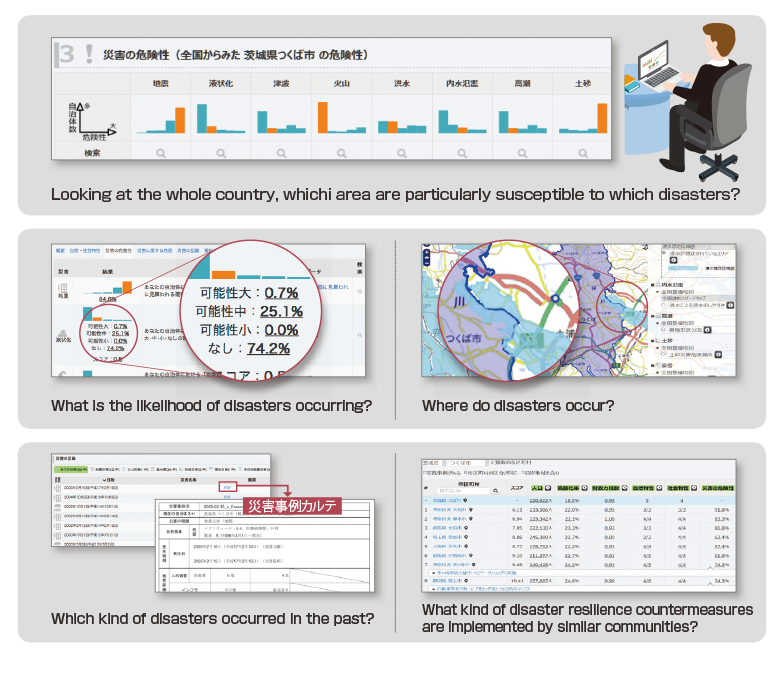Research regarding disaster countermeasures based on the use and application of information
What are 3 Steps to Confront all Disasters?
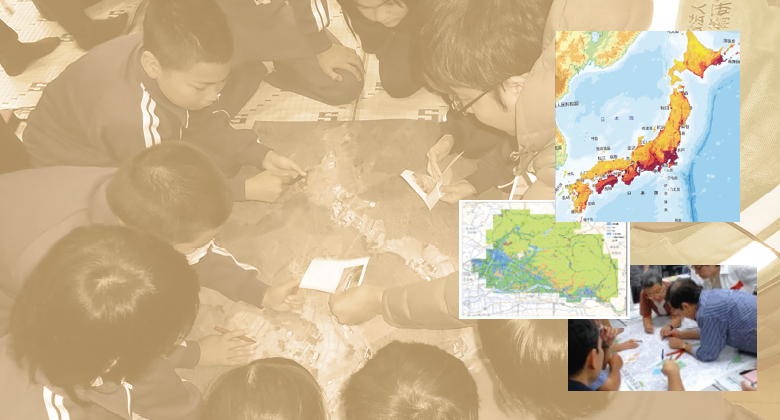
The threats posed by nature will never disappear. However, it should be possible to get rid of “disasters”. Doing so relies heavily on knowing the “enemy” which constitutes a threat, knowing the “self” that has to stand up to it, and to thinking through “what we need to do”, before finally putting that into action. Under this project, we are promoting research and development focused on all disasters, regarding technologies for visualizing the enemy and the self as “information”, methods for thinking about what action needs to be taken and how to take this action, and finally regarding how to solidly set these methods into society and encourage their use and application. Examples of this are community disaster resilience websites that are used and applied during normal times, and SIP4D and NIED-CRS during times of disaster.
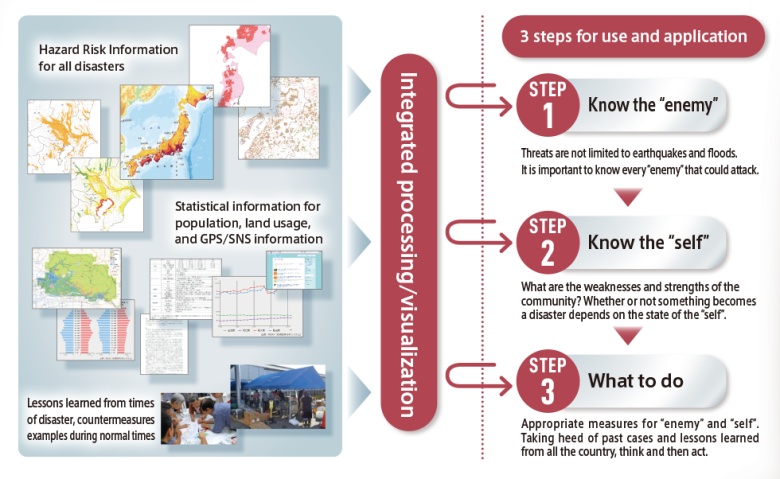
Which disasters in your community should you prioritize countermeasures for? “Community Disaster Resilience Web”
“Community Disaster Resilience Web” is a website for carrying out the 3 steps at the community level of knowing the enemy, knowing the self, and what to do. Selecting your community allows you to know what sort of disasters such as earthquakes and floods occur there and how often and to grasp how many people will be harmed. It also provides case examples of countermeasures that are being taken for such disasters in other parts of the country. You can also record your community activities, and use the website for creating disaster resilience maps and for disaster preparedness training. We aim to continually update and improve this resource, through research themes such as what information is needed for community disaster preparedness, how to convey this information, while also reconsidering the usability of various functions.
TOPICSSupporting “Disaster Resilience School” In Setagaya Ward (Tokyo)
The community disaster preparedness plan is a national system that begun as a lesson from the Great East Japan Earthquake. It is a mutual assistance scheme whereby members of a community take the initiative in designing countermeasures disaster resilience. In Tokyo’s Setagaya Ward for example, the 27 districts hold an annual workshop called “Disaster Resilience School”. Under this project, support is provided in the form of workshop tools that are available through “Community Disaster Resilience Web”.
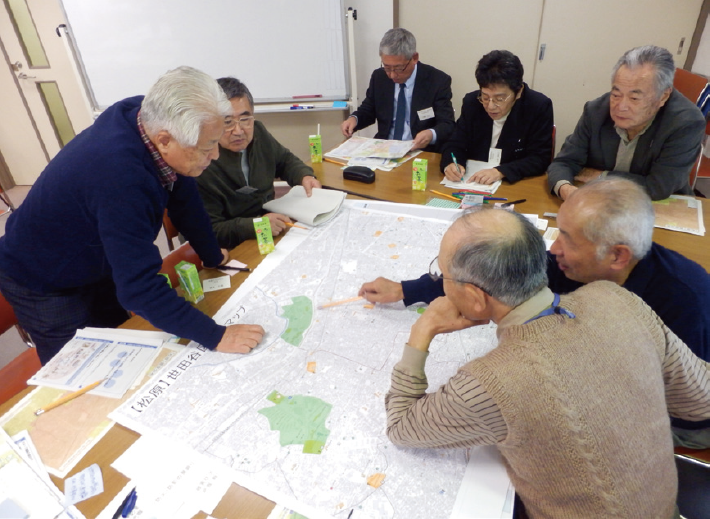
TOPICSVigorous disaster preparedness activities stipulated in Nagoya City’s community disaster preparedness plan
The community disaster preparedness plan designed by Hoshizaki school district in Minami Ward of Nagoya City was formally stipulated within the city’s community disaster preparedness plan. Their vigorous disaster resilience activities are also featured on the city’s website. These initiatives started through the usage of the system for creating disaster preparedness maps provided on Community Disaster Resilience Web, and this system is now run autonomously by members of the community. A key research theme of this project is to highlight the effort and ingenuity of such initiatives as well successes and pitfalls, and then to share these with other communities and to broaden their scope.
-
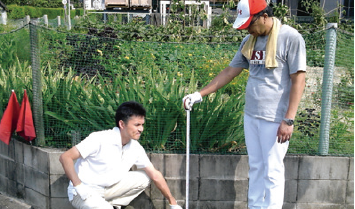
Hoshizaki School Distract Disaster Preparedness Map (Created by Hoshizaki School District Coordination Council) -
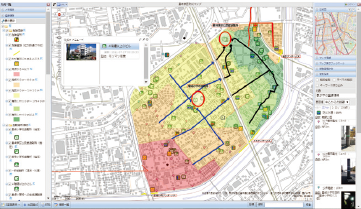
Disaster resilience walk-around in the Hoshizaki School District

